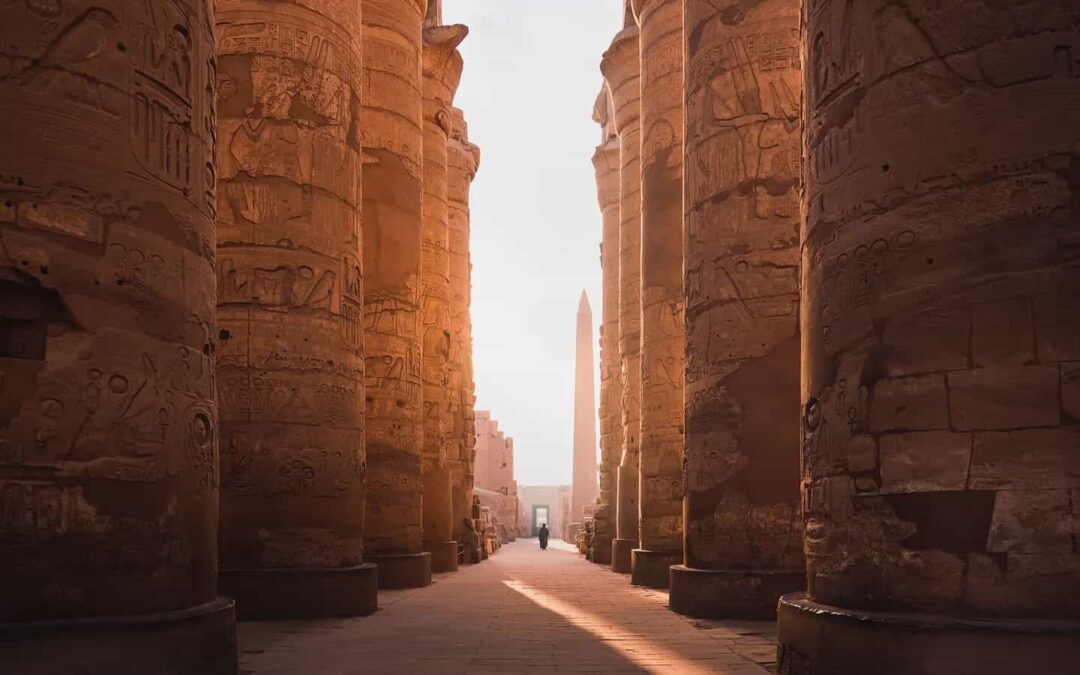Ramses II was the most powerful of the pharaohs. Akhenaten dared to defy the gods by establishing monotheism. His son, Tutankhamen, became most famous after the discovery of his tomb nearly 100 years ago. Hatshepsut was the woman who held the throne of the pharaohs. And Alexander the Great, the Macedonian conqueror who proclaimed himself the son of Ra to be able to wear the double crown of Upper and Lower Egypt… Despite their differences, all of them and a long line of pharaohs over 2,000 years shared the same commitment: the construction of the largest religious building on the planet.
This is the Karnak Temple, located north of the city of Luxor. It spans 80 hectares.
Its history began about 4,000 years ago. Dynasty after dynasty, pharaoh after pharaoh, added structures (such as sanctuaries, chapels, colonnades, patios, obelisks, statues…) to this monument, in order to proclaim its divine origin and legitimize its power before the people.
The University of California (UCLA) has created a video that summarizes the construction phases from Pharaoh Senusret I (20th century BC), from the 12th dynasty, until the time of Roman domination (from 30 BC to AD 395).
At its peak, at the end of the New Kingdom (1570-1070 BC), it is estimated that this entire complex – a veritable city within a city – employed around 80,000 priests. Those of highest rank enjoyed greater wealth than the pharaohs themselves.
But what made Karnak so special? The temple stands at the point where, according to ancient Egyptian beliefs, the primordial god Atum undertook the creation of the world; on a mound raised from the primeval ocean of chaos.
It was considered, therefore, an ideal place to worship the deities. In particular, Amun-Ra; his wife, Mut; and their son, Jonsu. The three form the so-called ‘Theban triad’ (since Thebes was the ancient name of Luxor).
Various parts of the complex are currently undergoing restoration. Here are some of its many wonders…
1- The Facade
The current entrance door to the enclosure dates back to the reign of Nectanebo I, the founder of the 30th dynasty. It was never completed; in fact, parts of the adobe ramps used for its construction are still preserved. While the left wall does not exceed 22 meters in height, the right one exceeds 31 meters.

2 – Avenue of Ram-Sphinxes
The road leading to the entrance gate is lined with sphinxes that have the body of a lion and the head of a ram. The ram was a representation of Amun, the main deity worshipped in the Karnak temple. Each sphinx guards a statue of Ramses II, the great pharaoh of the 19th dynasty, between its front legs.

3 – Columns that Support the Sky
Ramses II completed the forest of columns that make up the great hypostyle room, which was started under the direction of his father, Seti I. This enormous room was dedicated to the god Amun. Today, the twelve central columns, which are 21 meters high and have a capital in the shape of an open papyrus, are being restored to reveal the original engravings and colors. Surrounding them are 122 more columns, which are 13 meters tall and have a closed papyrus form. To visitors, they appear to hold up the sky since the stone slabs that once formed the ceiling collapsed. However, at the time, this was a closed and rather dim room.
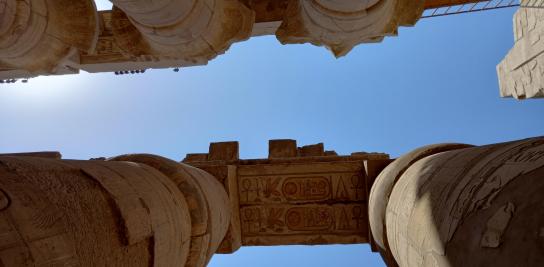
4 – The Sacred Lake
Constructed during the reign of Pharaoh Thutmose III of the 18th dynasty, this lake was used for ceremonial purification baths. It was also a symbol of the primordial waters from which life originated, and it housed sacred geese (the goose was another representation of the god Amun). Interestingly, although the lake receives water from the Nile, it curiously does not experience its floods. The lake measures 120 by 77 meters, equivalent to the size of seven Olympic swimming pools.
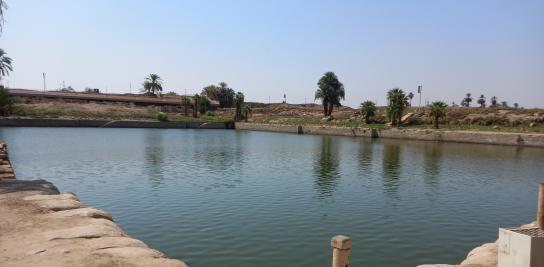
5 – The Great Scarab
This is the largest sacred scarab in Egypt, devoted by Amenhotep III (grandfather of Tutankhamun) from the 18th dynasty to the god Khepri. Khepri is a deity that takes the form of a dung beetle, as it was believed to push the sun across the sky in the same way that the beetle rolls dung. Khepri was associated with rebirth, renewal, and resurrection.

6 – The Three Obelisks
Pharaoh Thutmose I of the 18th dynasty had four obelisks erected at the location of the entrance to the Karnak temple during his reign. Today, only one remains (in the background of the photo on the left), which stands at 21.7 meters tall. His daughter, Hatshepsut, built a larger one (to his right) that stands at 28.6 meters. At their feet (in the foreground) lies another obelisk of Hatshepsut, whose inscriptions can be seen in detail. All three were carved from a single piece of pink granite.
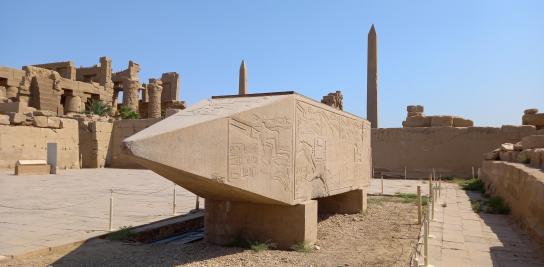
7 – The Festival Temple
This temple is called Akhmenu, but it is also known as the temple of Thutmose III’s festivals. Originally, the entrance was flanked by two statues of the pharaoh in festive attire since his jubilee was celebrated there. Known for his brilliant military victories (he has been referred to as the Napoleon of ancient Egypt), the columns of the sanctuary symbolize those of the military tent he used while on campaign.
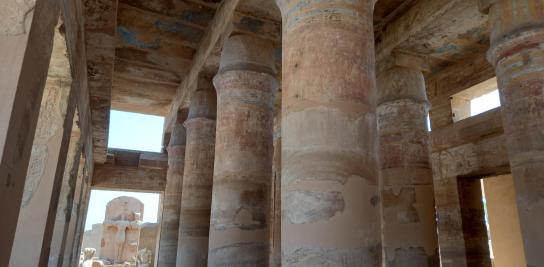
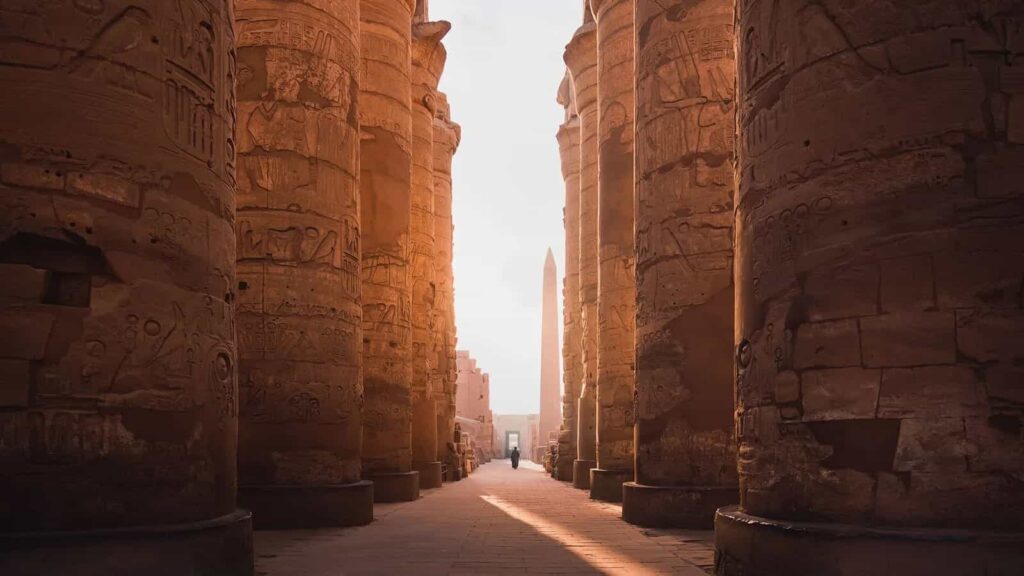
Source: VÍCTOR VIVES, lavanguardia

